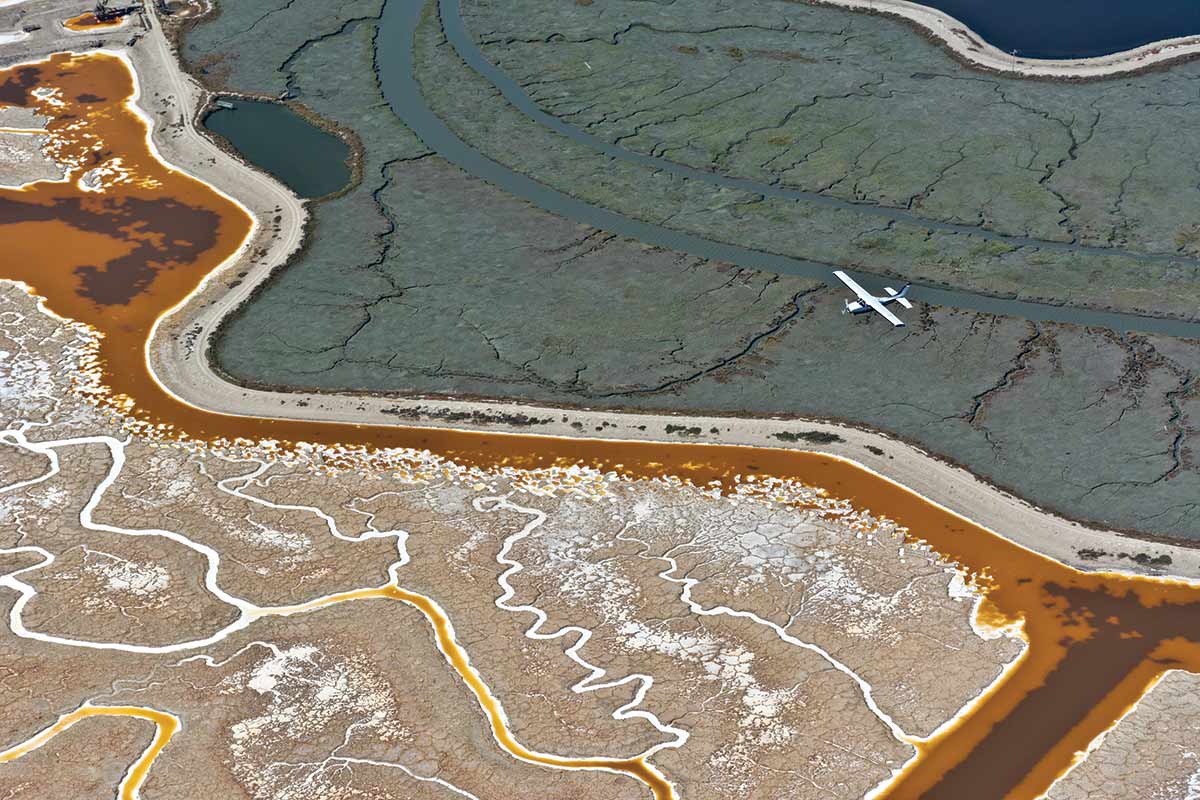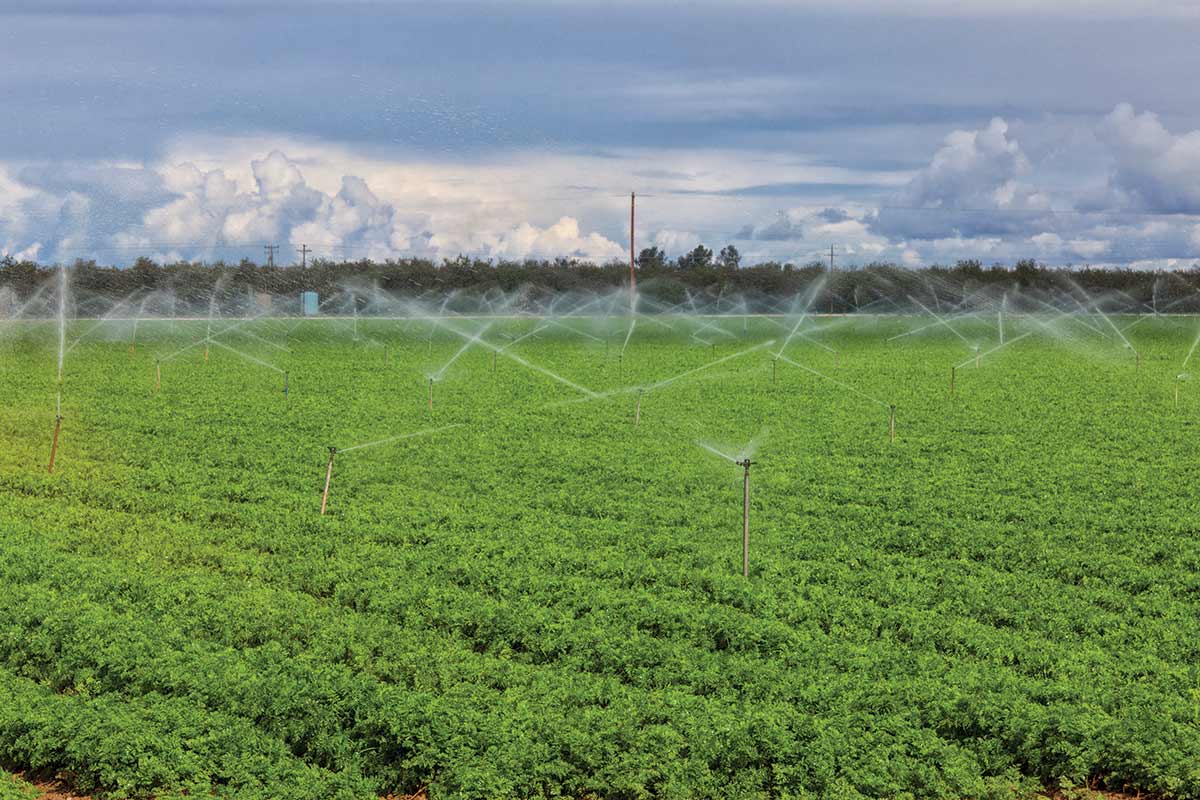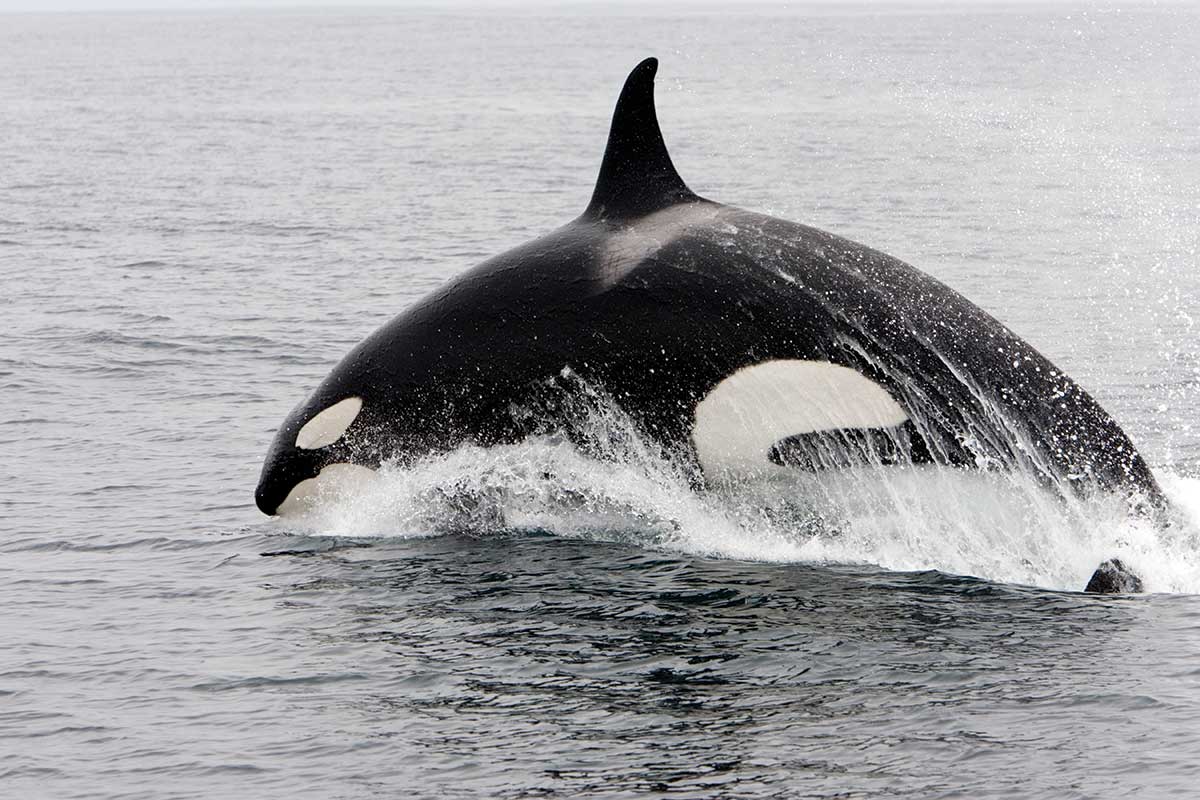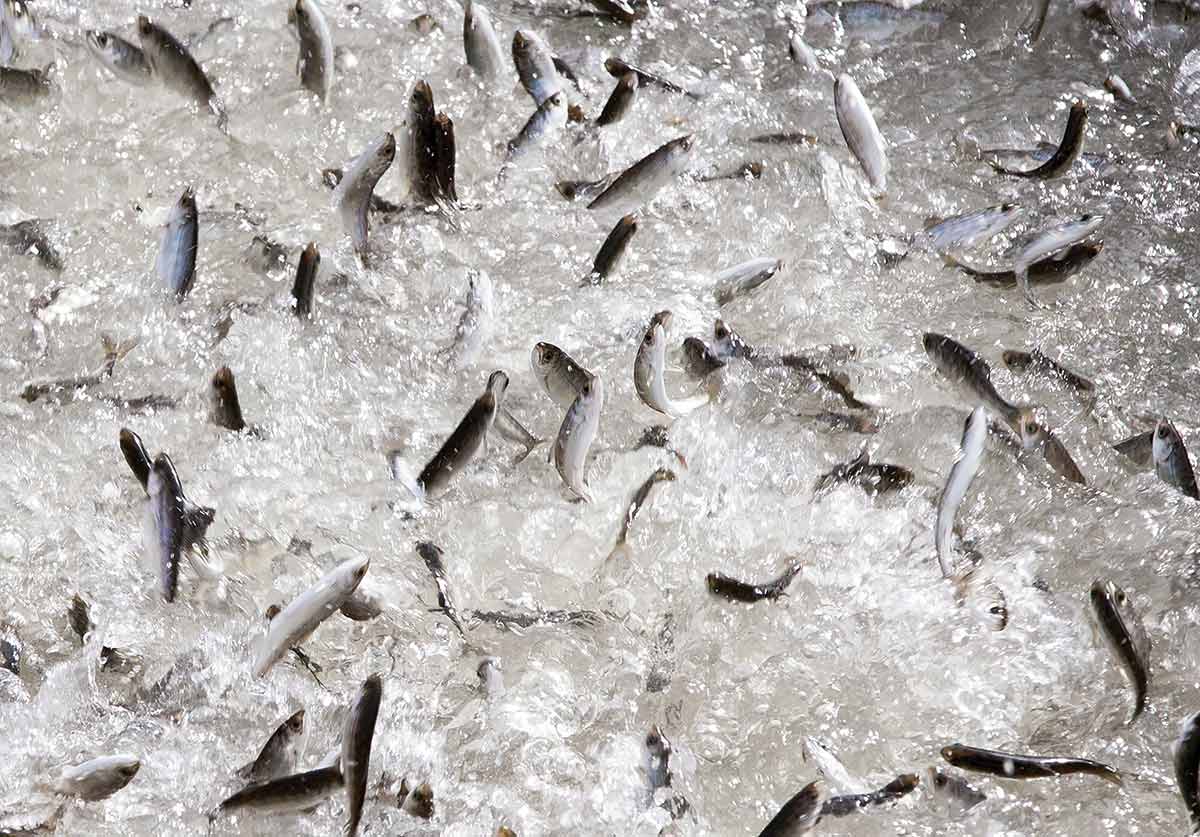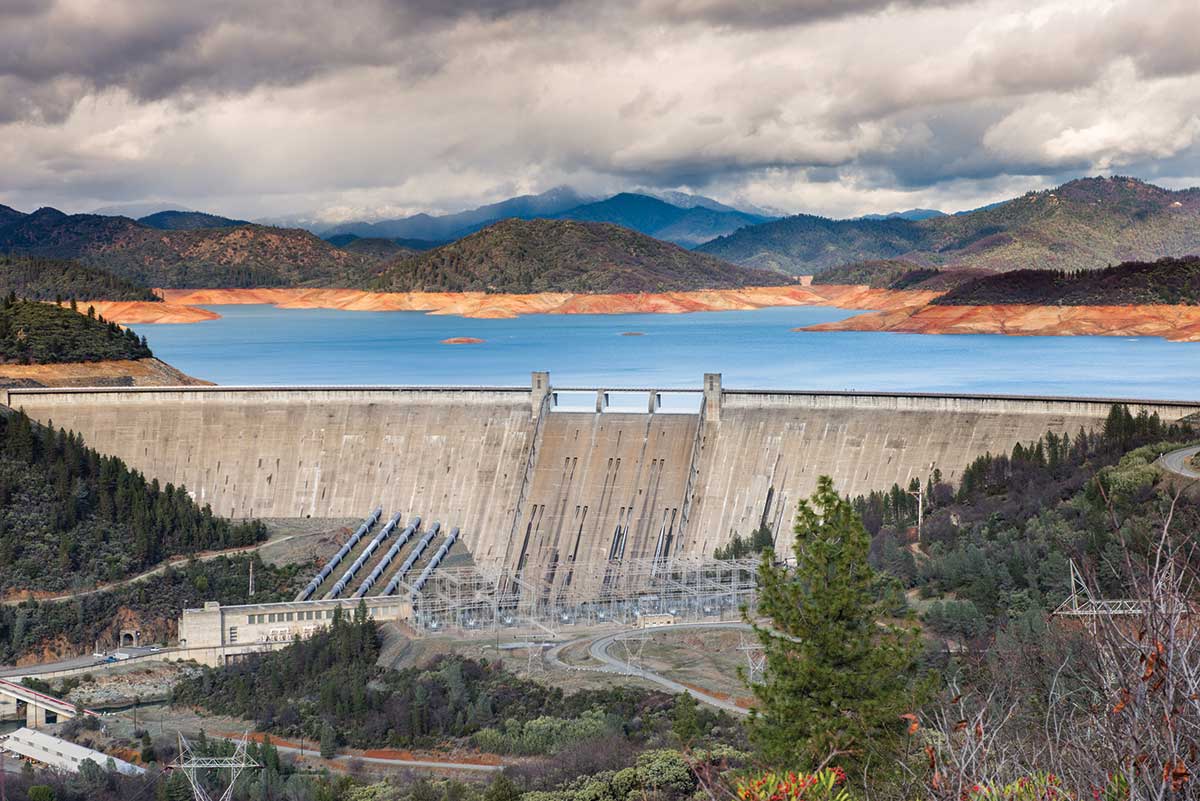Larry Collins is a big, gregarious man with tobacco-stained teeth, a salty tongue, and the commanding presence of a sea captain. For 40 years he has earned his living as a commercial fisherman, slinging wild-caught seafood from a bustling warehouse on Fisherman’s Wharf in San Francisco. Collins loves his profession; it has put enough money in his pocket to raise kids, buy a home, and save up for retirement in one of the most expensive cities in America. Sitting in his cramped office, with the smell of fresh fish wafting in from the docks, he talked about the days when more than 4,000 boats would head out from California’s ports each season and ply the waters of the Pacific Coast, trapping crabs and netting huge runs of Chinook salmon.
“I will give you the best salmon year in my whole career. It was 1988. We caught 1.4 million salmon in California, and another 800,000 escaped up the river,” he said with obvious nostalgia.
That era, though, is long gone. These days, the local fishing industry is a withered remnant of its former self. In 2018 “we caught maybe 175,000 salmon, and 80,000 went up the river,” Collins told me. “Fifty-three boats delivered 50 percent of what was caught.” While some salmon seasons have been much better than others, such as the robust 2019 season, “the fishery has probably been reduced to 5 or 10 percent of what it used to be.” Cut off from their ancestral breeding grounds by enormous dams, preyed on by invasive species, and deprived of the freshwater flows that are crucial to sustaining their populations, the salmon have suffered long-term decline and face an increasingly grim future.
“They are in terrible condition,” Collins said, his voice rising. “And no one seems to give a fuck!”
But it’s not just the salmon that are suffering. The whole San Francisco Bay ecosystem—that enormous estuary with its maze of bays, rich delta, and associated rivers and streams—is in the midst of an ecological calamity. Decades of dam building and water extraction to quench the thirst of California’s growing population and the needs of its mighty agriculture industry have starved the state’s waterways, as well as the bay itself, of crucial freshwater supplies. As a result, the entire estuary is under enormous stress. Its water quality is dicey, in some places too stagnant or too saline or beset by algal blooms. Its aquatic food web is fraying, threatening bird species and marine mammals, including orcas. And its fish populations, from the imperiled salmon to tiny smelt, have plummeted. “The fisheries for Chinook salmon, starry flounder, and other species are collapsing,” said Jon Rosenfield, a senior scientist at San Francisco Baykeeper, a water quality organization.
The Bay Area, in other words, is grappling with a local manifestation of our global mass extinction crisis.
“We have pillaged that ecosystem,” said Felicia Marcus, a former chair of the California State Water Resources Control Board. “We have diverted more water from the ecosystem than any estuary that has survived. We are on the brink of losing the salmon, the smelt—all of it.”
Popular
"swipe left below to view more authors"Swipe →
There is much at stake. San Francisco’s estuary, one of the largest in North America, is an ecological mixing bowl where Pacific saltwater meets the freshwater runoff that flows from the Sierra Nevada through the Sacramento and San Joaquin rivers into San Francisco Bay and on to the ocean. The blending of these waters produces rich habitat for salmon, smelt, shrimp, crabs, pelicans, cormorants, ducks, whales, seals, and humans. If it continues its decline, everything from fishing jobs and tourist businesses to tribal food security and the general economic stability of Northern California could go with it.
But there are ways to abate this crisis. In 2018, California water officials took strides to ease the strain on San Francisco’s estuary by moving to update and strengthen a body of regulations known as the Bay-Delta Plan. The amendments, which get made every couple of decades, seek to restrict the quantity of water that cities and agricultural operators can divert from the bay’s tributaries and thereby restore the ailing ecosystem.
The updated Bay-Delta Plan is meant to help save the bay, its watershed, and its wildlife, so one might assume it would have widespread support among the region’s politicians. But that’s not the way water politics works in big, dry, crowded California. The plan’s new mandates are facing staunch opposition from a host of powerful antagonists, including the city of San Francisco, that glittering capital of left coast liberalism. Mayor London Breed, the city’s attorney, and its water utility have taken steps to oppose the updated plan. The city’s political establishment is in the midst of a legal battle to block stronger environmental protections for the San Francisco Bay ecosystem. The establishment’s allies in this fight: the state’s industrial agriculture interests and the federal government under President Donald Trump.
“I am profoundly disappointed in San Francisco,” said Barbara Barrigan-Parrilla, the executive director of the conservation group Restore the Delta and a veteran of California’s water wars. “Everyone is worried about fighting and protecting their share of the water, and they don’t understand that if you can’t keep your water systems alive and healthy, then we are going to end up in a very bad place. They are interested in short-term gain instead of long-term strategy.”
In May of last year, a United Nations–backed panel of scientists and policy experts released an alarming report stating that the world is in the grip of an “unprecedented” and “accelerating” biodiversity crisis. The panel found that 1 million species around the globe are at risk of extinction, many within the coming decades. “The essential, interconnected web of life on Earth is getting smaller and increasingly frayed,” warned Josef Settele, a research scientist who cochaired the panel, upon the report’s release. “This loss is a direct result of human activity.”
The story of San Francisco Bay is a case study in how such destructive human activity manifests at the local level and wreaks havoc on prized natural resources. It’s an object lesson in the way widespread global forces—industrial farming, urban growth, climate change—scramble ecosystems and push species to the brink of collapse. But it’s also a California story, featuring the powerful industries and particular environmental conditions that have shaped the destiny of the Golden State.
Much of California is semidesert. While the state boasts mighty rivers, a snow-capped sierra, and the lush Bay Area estuary, its cities are often parched. “Los Angeles is drier than Beirut; Sacramento is as dry as the Sahel; San Francisco is just slightly rainier than Chihuahua,” writes Marc Reisner in Cadillac Desert, his magisterial book on the history of water development in the American West. And California’s Central Valley, the heart of the state’s $50 billion–a–year agriculture industry, is a place where “rainless summers” mean that “no important crop except wheat [can] be raised without irrigation.” Yet this semidesert is home today to nearly 40 million people and one of the largest agriculture industries on the planet.
The only way this paradox is possible is through overwhelming human intervention, specifically by the federal government. Starting in the New Deal era, under the auspices of the Bureau of Reclamation, the US government embarked on a massive water development spree that saw it build huge dams across the West to trap, store, and divert water from rivers to cities, farms, and ranches in Arizona, Colorado, Wyoming, and yes, California. It was water welfare on a massive scale, meant to support small farmers and growing towns across the region, and for a while it enchanted the American imagination. Who hasn’t heard of the Hoover Dam, completed in 1936 on the Colorado River, which still supplies huge quantities of water to Los Angeles and Arizona, among other places?
In California the Bureau of Reclamation’s enormous water development efforts were known as the Central Valley Project, or CVP. It created a sprawling network of dams, reservoirs, and canals that sucks up the state’s river water and supplies it at heavily subsidized rates to Central Valley farmers and to residents of Los Angeles and other Southern California cities. A second development, called the State Water Project, or SWP, was initiated in the early 1960s to dam even more rivers and provide the water to California’s farmers.
In many ways, these two projects, which primarily draw water from tributaries that feed San Francisco Bay, made modern California possible. Above all, they created the state’s agriculture industry, saving it from impending groundwater depletion and providing it with a constant supply of publicly subsidized water. And while the CVP and the SWP were conceived to support small farmers and promote a sort of Jeffersonian ideal, they ultimately sparked the rise of the Big Agriculture empires that have enriched land-owning elites.
These projects, Reisner writes in Cadillac Desert, ended up being “one of the country’s foremost examples of socialism for the rich.” Today, California’s agriculture industry accounts for as much as 80 percent of water use in the state.
The projects also rained misery on some of the state’s Indigenous tribes, including the Winnemem Wintu. The 1945 completion of the Shasta Dam, a centerpiece of the CVP, inundated the land on which the majority of Winnemem Wintu villages stood. “The tribe was moved out of their villages,” said Mark Miyoshi, its historic preservation officer. “They didn’t have anything. They were made homeless. We were the sacrifice that allowed the Central Valley Project to be constructed.”
The CVP and the SWP devastated the state’s natural environment, too, wrecking streams, rivers, estuaries, wetlands, and wildlife. Intensive water diversions by agricultural and urban water users result in San Francisco Bay’s being deprived, on average, of approximately 50 percent of its annual freshwater inflow. Sometimes that figure reaches as high as 70 percent.
These water diversions have created a kind of permanent drought for the bay. Among other negative effects, this has heightened salinity levels in the estuary and harmed species like the endangered delta smelt, a tiny iridescent fish that once numbered in the millions. In 2018 and 2019, after decades of decline, a thorough survey of the waters failed to turn up a single smelt.
Meanwhile, the dams cut off Chinook salmon—the state’s most iconic fish species—from their ancient spawning grounds high in Northern California’s mountains. Along with industrial pollution and mining, the dams have led to the long-term decline of the winter-run Chinooks, which are currently listed under the Endangered Species Act. Winter-run Chinooks once came in droves each year from the Pacific Ocean, swimming through San Francisco Bay and up into the California highland interior. These days, only a few hundred to a few thousand return to spawn beneath a giant dam on the Sacramento River. The Central Valley’s unique spring run of Chinook salmon is also listed under the Endangered Species Act.
This shocking decline has contributed, in turn, to the collapse of the orca populations that depend on Pacific Coast salmon for their survival. The number of so-called southern resident orcas has dropped from a high of 98 in 1995 to just 73 as of August 2019. The population of these majestic animals is now at a 30-year low.
San Francisco Bay, like most ecosystems, exists in a delicate balance, the fate of its species intertwined, their lives dependent on one another. But as in many ecosystems, some species exert more influence than others, their presence holding the system together like a keystone in an arch. California’s Chinook salmon is one of these essential species. Over the millennia, the multitudes of Chinook traveling between sea and river have delivered vast loads of rich ocean nutrients to inland California, all while providing sustenance to whales, seals, birds, bears, wolves, coyotes, humans, and even shrubs and trees. Now, as salmon numbers dwindle, other species are suffering too. Should the Chinook disappear, it’s unlikely that San Francisco Bay will ever really recover.
To get a look at the current state of this keystone species, I took a short trip with John McManus, a veteran environmentalist with the Golden State Salmon Association and a dogged defender of California’s fisheries. I met him on a drizzly morning last May in Daly City, south of San Francisco. He wheeled up in an old gray Toyota minivan, and we hit the road, crossing the Bay Bridge and winding through dense traffic until we arrived at the San Francisco Bay delta, where the Sacramento and San Joaquin rivers merge. Once a wild landscape with some of the best soil on earth, the delta is now blanketed with farms and crisscrossed by canals and levees. It is also sinking below sea level as a result of groundwater depletion.
On the drive, McManus filled my brain with facts about dams, farms, and fish. “We really messed things up. This was such rich habitat once upon a time,” he said. “We lost about 80 or 90 percent of the historic salmon habitat when they dammed all the Central Valley rivers.”
The problem, he explained, begins at the very start of the salmon’s life cycle. Nowadays, the salmon that manage to hatch have a tough time making it out to the sea, where they grow into adulthood. When the tiny salmon swim down from the mountains, the low and irregular flow in the region’s rivers and streams causes lots of baby fish to get trapped in the delta’s artificial canals, where they’re preyed on by invasive species, like hungry striped bass, or sucked into irrigation pumps.
“If you’re a baby salmon,” McManus said, “and you’re coming down the Sacramento River trying to get to the ocean, if you get pulled into that delta cross channel, you will never be seen again. It’s curtains.”
About an hour into our drive, we pulled into a small gravel parking lot in the town of Woodbridge, where two hulking tanker trucks were idling near the edge of the Mokelumne River. Inside each truck, swimming around in the pitch black, were approximately 100,000 baby salmon from a nearby hatchery. In an effort to prevent a total collapse of the salmon populations, the state and federal governments maintain about a dozen hatcheries across California that raise salmon and then release them into the wild.
We watched as a crew of technicians from the state’s Department of Fish and Wildlife pieced together a long metal pipe and lowered it slowly into the fast-moving river. Then they pulled a lever. There was a soft rushing sound, followed by a burst of water from the end of the pipe, and a flurry of tiny fish gushed into the river. They were just a small fraction of the many millions that California’s hatcheries raise each year.
This is what it takes to keep the salmon populations from crashing even further below their historical levels. “Without the hatcheries, you would see some salmon persist in small numbers, I’m guessing,” McManus said. But “some might blink out. We would have lost winter-run Chinook salmon…. We would have lost them in the last drought without the hatcheries.”
The baby fish kept pouring out of the trucks, and soon they were churning the water into whorls of glinting silver. Most of them, I soon learned, weren’t likely to survive. They were an experimental group meant to determine whether any of them could make the perilous trip through the delta.
Bill Smith, a state employee in charge of the Mokelumne River Hatchery, wasn’t optimistic. He said most of the baby fish would likely perish on their way to sea. Invasive predators “will take more than their fair share, and the [irrigation] pumps will take the rest,” he said.
To save San Francisco’s threatened estuary, to really restore it, is a herculean task—one that, in a perfect world, would include stalling climate change; reining in urban growth, industrial agriculture, and pollution; and demolishing the dams that have devastated the landscape. But few hold out hope for such ambitious measures. Instead, most conservationists in the Bay Area are focused on a more pragmatic and immediate solution: restricting the amount of water that agricultural operators and cities are allowed to pull out of the delta’s tributaries, thereby alleviating the human-made drought that has done so much damage to the region’s watershed.
This is precisely what the state’s water regulators sought to accomplish in December 2018, when, after a long and painstaking process, they finalized the first of two updates to the Bay-Delta Plan’s water quality standards. The amendments, which were crafted by the California State Water Resources Control Board, a powerful independent agency, require irrigators and city agencies to leave more water in certain key tributaries that sustain the bay and its many species.
In the case of San Francisco and nearby irrigation districts, the revised Bay-Delta Plan requires them to leave 30 to 50 percent of the water that would naturally flow through the Tuolumne, Stanislaus, and Merced rivers in the winter, spring, and early summer. The Tuolumne is the city’s main source of drinking water and an important conveyor of fresh water from the Sierra Nevada to the San Francisco Bay delta; these days humans sometimes divert as much as 90 percent of its flow during the winter and spring snowmelt.
Some high-profile San Franciscans back the new regulations. Aaron Peskin, who represents District 3 on the city’s Board of Supervisors, is a supporter of the updated Bay-Delta Plan. “San Francisco, I think, needs to be part of the solution as the stresses on the Tuolumne system and on the bay and delta become more profound and as our fisheries are on the verge of collapse,” he said. “I think we have a political and social and environmental responsibility to do our part.”
To that end, in the fall of 2018, as the regulators were finalizing the first phase of the new Bay-Delta Plan, Peskin introduced a resolution to signal the city’s support for the move. The resolution, which was passed by the Board of Supervisors, barred the city attorney from pursuing any litigation meant to block the new regulations. “I thought we could establish that our policy was to adhere to what the state water board was going to mandate,” Peskin said.
But then higher powers intervened. In November 2018, allegedly under pressure from Senator Dianne Feinstein, a key player in California water politics, Breed vetoed Peskin’s resolution. (A spokesperson for Feinstein asserted that “she didn’t directly weigh in” with the mayor about the matter.) “San Francisco, despite all of its left-leaning and environmentally inclined self-image, is in the midst of a huge growth spurt, as is Silicon Valley,” Peskin said. His resolution and water use restrictions in general were “seen as being a threat to the long-term economic viability of San Francisco and the peninsula.”
Shortly after his resolution was vetoed, San Francisco joined a lawsuit to block the first phase of the Bay-Delta Plan update. That lawsuit is ongoing, and the city has some strange bedfellows in its effort to stymie the new protections. A slurry of influential agriculture interests—including “Republican ranchers from the central part of our state,” Peskin said—are suing to block the updated plan; so is the Trump administration.
The fight over the Bay-Delta Plan, it is important to note, is unfolding in the midst of a broader legal and political struggle over environmental protections in California. The Trump administration is also working in lockstep with powerful agricultural interests to roll back the Endangered Species Act’s protections for California’s salmon, smelt, and orcas. Tellingly, the federal official orchestrating this pro-industry blitz is David Bernhardt, Trump’s secretary of the interior and a former lobbyist for some of Big Ag’s most influential water users in the state.
In their defense of San Francisco’s lawsuit, city officials say they are merely trying to rein in overzealous regulators. “This [legal action] is an unfortunate but necessary step to preserve the rights of the 2.7 million Bay Area customers who rely on [the city’s] water system,” a spokesperson for the city attorney’s office said last year.
Environmental leaders disagree with that claim. “To suggest the Bay-Delta Plan would somehow cause hardships for San Franciscans doesn’t ring true,” said Sejal Choksi-Chugh, the executive director of San Francisco Baykeeper. “I’m fairly certain most San Franciscans would choose to protect our beautiful bay over the interests of industrial agriculture. When it comes to water conservation, San Francisco’s city government needs…to catch up with cities like Los Angeles that require everyone who uses water to enact conservation measures—ratepayers and industrial clients alike.”
So far, though, San Francisco appears determined to prevent the updated protections for its namesake waterway. Instead of complying with new regulations, the city and its allies in the agriculture industry hope to persuade state officials to allow them to hammer out a series of less-stringent voluntary agreements governing diversions from the San Francisco Bay delta and its watershed. These groups say they seek a compromise that will protect fish while preserving access to plentiful drinking water supplies. But many conservation groups, including Defenders of Wildlife and the Environmental Defense Fund, have expressed deep concern about this so-called compromise.
The voluntary agreements “will not adequately improve conditions in the Bay-Delta estuary and its Central Valley watershed,” members of the conservation community wrote in a September 2019 letter to Governor Gavin Newsom, whose administration is presiding over the matter. “Furthermore, the ongoing process is flawed and not on course to produce an agreement that is legally, scientifically, and biologically adequate to survive environmental review and legal challenge.”
Despite these warnings, Newsom’s administration seems keen to move forward with the process. Along with influential figures like Feinstein, the governor has praised the voluntary agreement negotiations, calling them “a path forward” that will “move past the old water binaries and set us up for a secure and prosperous water future.” He declined to reappoint Felicia Marcus as chair of the California State Water Resources Control Board, despite (or perhaps because of) her critical role in developing the Bay-Delta Plan update. And while he has pledged to double the state’s salmon population by 2050, environmentalists are increasingly displeased with his approach to the bay and its watershed. Newsom “is ignoring science and looking to cut deals” with the big water users, said Restore the Delta’s Barrigan-Parrilla.
City officials in San Francisco and their allies appear to be in no hurry to change the status quo. One key official was loath even to acknowledge the severity of the regional problems. When I asked Michael Carlin, the deputy general manager of the San Francisco Public Utilities Commission, whether he thought the salmon in the Tuolumne River were in good condition, he grew irritated. “No, I am not going to say whether they are in good condition or not in good condition,” he said as we sat in the headquarters of the commission, which oversees the city’s water supply and has been leading its opposition to the updated Bay-Delta Plan. “You are asking a very loaded question,” he added, “and a very unfair question, to tell you the truth.”
Fair question or not, the situation today in San Francisco Bay is troubling. It’s troubling for salmon and smelt, for orcas and seabirds, and for humans too. An entire ecosystem is unraveling bit by bit before our eyes. Northern California is a microcosm of the global biodiversity crisis. The threat of mass extinction isn’t just happening in far-off lands or confined to some distant future. It is happening in the United States, right now.
Peskin, speaking from his office in San Francisco’s City Hall, boiled the crisis down to its grim essence. “I don’t want to be the purveyor of doom and gloom,” he said, “but we are kind of fucked. Between sea level rise and changing weather patterns and fire becoming the new normal and fish die-offs and ecosystem collapse, it is really not a pretty picture.”

